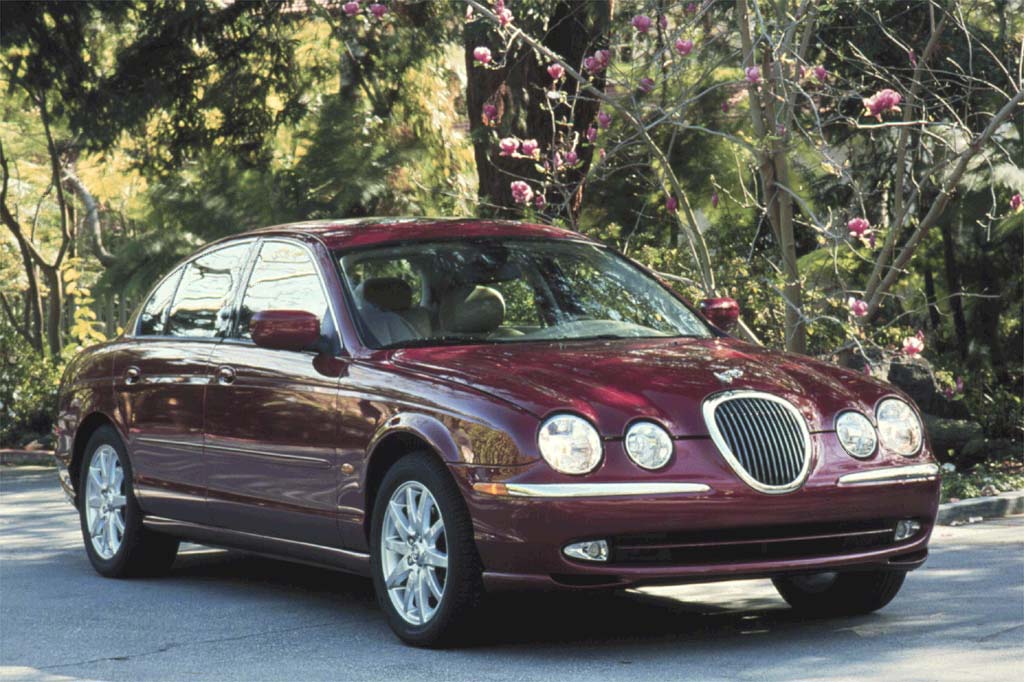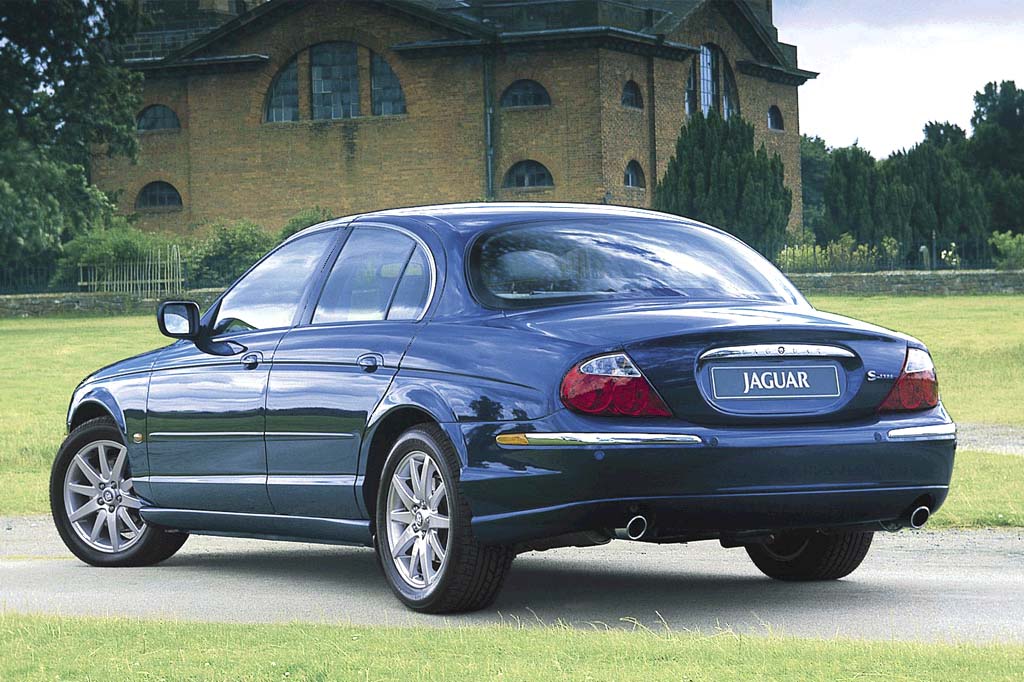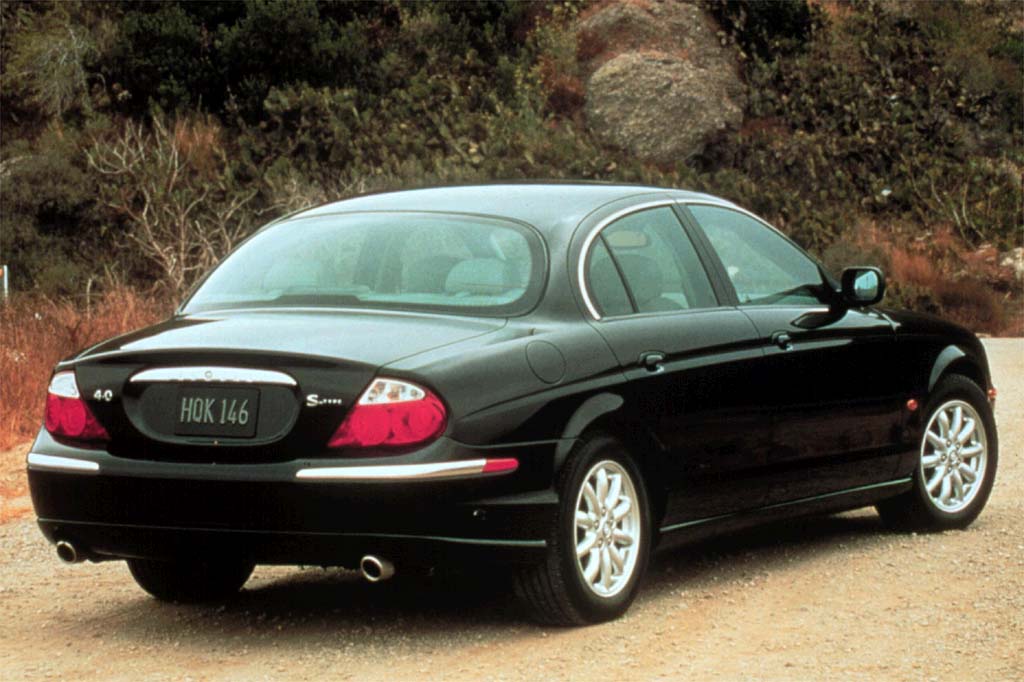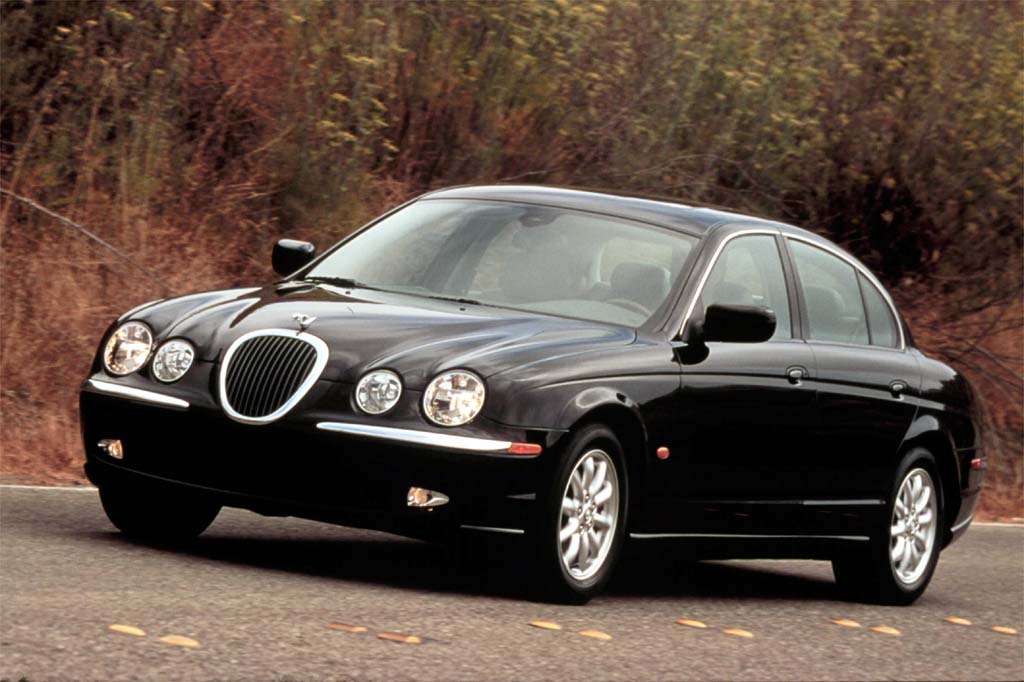| Premium midsize car; Built in England |
|
|
| Good condition price range: $3,000 – $6,500* |

2000 Jaguar S-Type

2000 Jaguar S-Type

2000 Jaguar S-Type interior

2001 Jaguar S-Type

2001 Jaguar S-Type
| Pros: |
|
| Cons: |
|
Blending traditional Jaguar charm with modern engineering, the S-Type ranks as good value in an upper-crust sedan, though it’s not as sporty as BMW’s 5-Series. Reliability under Ford’s jurisdiction should be better than Jaguars of the past.
Overview
Introduced in spring 1999 as an early 2000 model, Jaguar’s smaller rear-drive luxury sedan shared its platform with the Lincoln LS, since both companies were part of Ford Motor Company. Unlike the Lincoln, however, the S-Type was built in Britain using mostly Jaguar-specific components.
Seating five, the four-door sedan came in two versions, with two different engines. The 3.0 sedan used a 3.0-liter V6, derived from a Ford design. The S-Type 4.0 held a 4.0-liter Jaguar V8. Both engines drove a Ford/Jaguar five-speed automatic transmission. Lincoln’s LS used its own versions of each engine.
Traction control and antilock all-disc braking were standard, along with front head/chest side airbags. Options included a Weather Package with Jaguar’s antiskid Dynamic Stability Control, and a Sport Package with computer-controlled shock absorbers and high-speed tires on 17-inch wheels. A Deluxe Communications Package included an in-dash navigation system/cell-phone assistance system, plus voice-activated control for the phone, audio, and climate functions.
Optional Reverse Park Control sounded an alert as the car backed toward an obstacle. As the 2000 model year officially began in autumn 1999, the S-Type added a trunk pull-down strap and switched to restyled alloy wheels. Rivals included the BMW 5-Series, Mercedes-Benz E-Class, and Lexus GS 300/400.
Yearly Updates
| 2001 S-Type Jaguar’s Reverse Park Control warning system became standard for 2001. The 4.0 sedan gained a new premium audio system with a six-disc CD changer, mounted in the trunk rather than the glovebox. The Communications Package now included a Motorola digital phone with in-dash keypad dialer. Both models now were rated as Low Emission Vehicles, and gained rear child-seat safety anchors. The 4.0 sedan also got new 10-spoke alloy wheels. |
| 2002 S-Type A new Sport edition for 2002 used the previous Sport option as its foundation. Available with either engine, the Sport version had body-color exterior trim and sport front seats, plus the previous package’s computer-controlled shocks and 17-inch wheels with high-speed tires. All S-Type sedans added rear cupholders. Jaguar introduced a redesigned S-Type sedan for 2003. |
